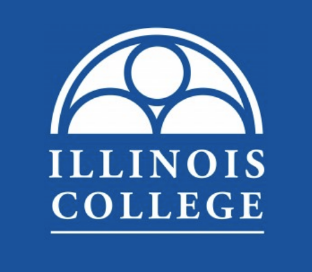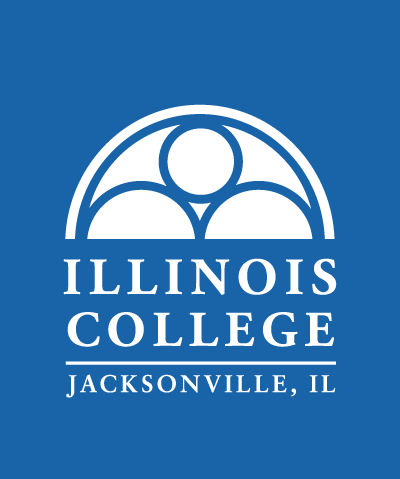Benches are rooted in history at Illinois College
Wood from the Turner Titan tree planted by Jonathan Baldwin Turner on his farm can now be seen in the form of two benches on campus.

By Angela Bauer
This article appeared in the Jacksonville Journal-Courier on Dec. 27, 2021.
A pair of benches that now grace Illinois College’s campus are rooted in more than 150 years of history.
The benches are made from remnants of the Turner Titan tree, an Osage orange tree that Jonathan Baldwin Turner planted on his Evergreen Farm near Butler around the time of the Civil War.
The tree survived everything thrown at it over the years, even outlasting the farmhouse it was intended to shade, until a December 2018 tornado took it down.
Turner’s family still owned the farm and, because of Turner’s connection to Illinois College, agreed to let Illinois College have some of the wood.
“We wanted to make something commemorating Turner and this history,” said Guy Sternberg, Illinois College adjunct faculty member and co-director of the college’s Starhill Forest Arboretum in Petersburg. “The biggest pieces we could find that weren’t all twisted up and broken, we thought we could have benches made.”
To understand all of that history, one should start at the beginning.
Turner was a professor at Illinois College in the mid-1800s who had the idea — some 30 years before the invention of barbed wire — that the school could use a fence of some sort around campus, Sternberg said.
“He was the one back in 1840, 1842, that said we needed something to keep the cattle out,” Sternberg said. “He came up with the idea to do something like they did in England, which had all of these hedgerows made of thorny hawthorn.”
With some research, Turner decided the Osage orange, which is “very thorny,” Sternberg said, would work nicely.
“He got some seeds from Texas and started to play with them on his own farm down in Butler,” Sternberg said. “They perfected the ways of growing them, came up with the techniques” for developing them into hedgerows.
At one point, Turner had 10 acres of his farm planted in Osage orange as he researched the best ways to plant them and tend to them — from spacing to pruning — to create an effective hedgerow, Sternberg said.
Turner’s research led Illinois College to plant a hedgerow of Osage orange trees, which, beginning in 1882, led students and faculty to begin taking an annual spring study break to have a picnic and trim the hedgerow; an annual Osage Orange Festival commemorating those picnics continues at IC.
But Turner’s work didn’t stop at IC, Sternberg said, adding that Osage orange was planted across the Midwest over the next 50 years.
At one point there were 39,000 miles of Osage orange hedgerow planted in Kansas alone, Sternberg said, noting that, even after barbed wire was introduced, resourceful farmers simply used their existing Osage orange trees as fence posts, attaching the barbed wire directly to the tree trunks.
“This became the most planted tree in North America,” he said.
It also accounts for why the Midwest fared somewhat better than the Southern Plains when the Dust Bowl devastated the area in the 1930s, he said.
“The hedgerows provided wind breaks,” Sternberg said. “They kept the soil in the Midwest from being blown away. Now they’re using these trees, experimenting with them ... because they’re so adaptable. They’re resistant to disease and insects and don’t decay.”
They do, however, weather nicely, as can be seen in the two IC benches — both crafted by a woodworker who volunteered hundreds of hours of his time and effort, Sternberg said. One sits inside Tanner Hall administration building while the other sits under an awning outside Parker Science Building.
The bench outside Parker has turned a rich brown in the months since it was installed, while the bench inside Tanner remains the wood’s original color.
“Osage orange wood, when it’s fresh, is bright yellow,” Sternberg said. “It turns orangish brown with exposure to sun. We’re hoping the (indoor) bench will stay yellow. But even if it does get darker, it will be red.”
The benches also aren’t the end to the legacy of the Turner Titan at IC, Sternberg said. Smaller pieces of the tree that weren’t suitable for use on one of the benches are being turned into smaller commemorative items that will be used around campus.
A cultivar also is being developed that will allow anyone with the desire to buy and plant their own Turner Titan, Sternberg said.
“It’s actually a clone, actually rooted from cuttings,” Sternberg said. “They’re genetically identical … the exact same tree.”
The Turner Titan cultivar — along with three other cultivars from Starhill — soon will be available in the United States through Forrest Keeling Nursery of Elsberry, Missouri, and in Europe through Pavia Nursery in Belgium. Proceeds from the sales will benefit Starhill Forest Arboretum.
The Turner Titan’s “legacy lives on,” Sternberg said. “We’re trying to make sure parts of this tree, its legend, remain a part of the history of the college.”


